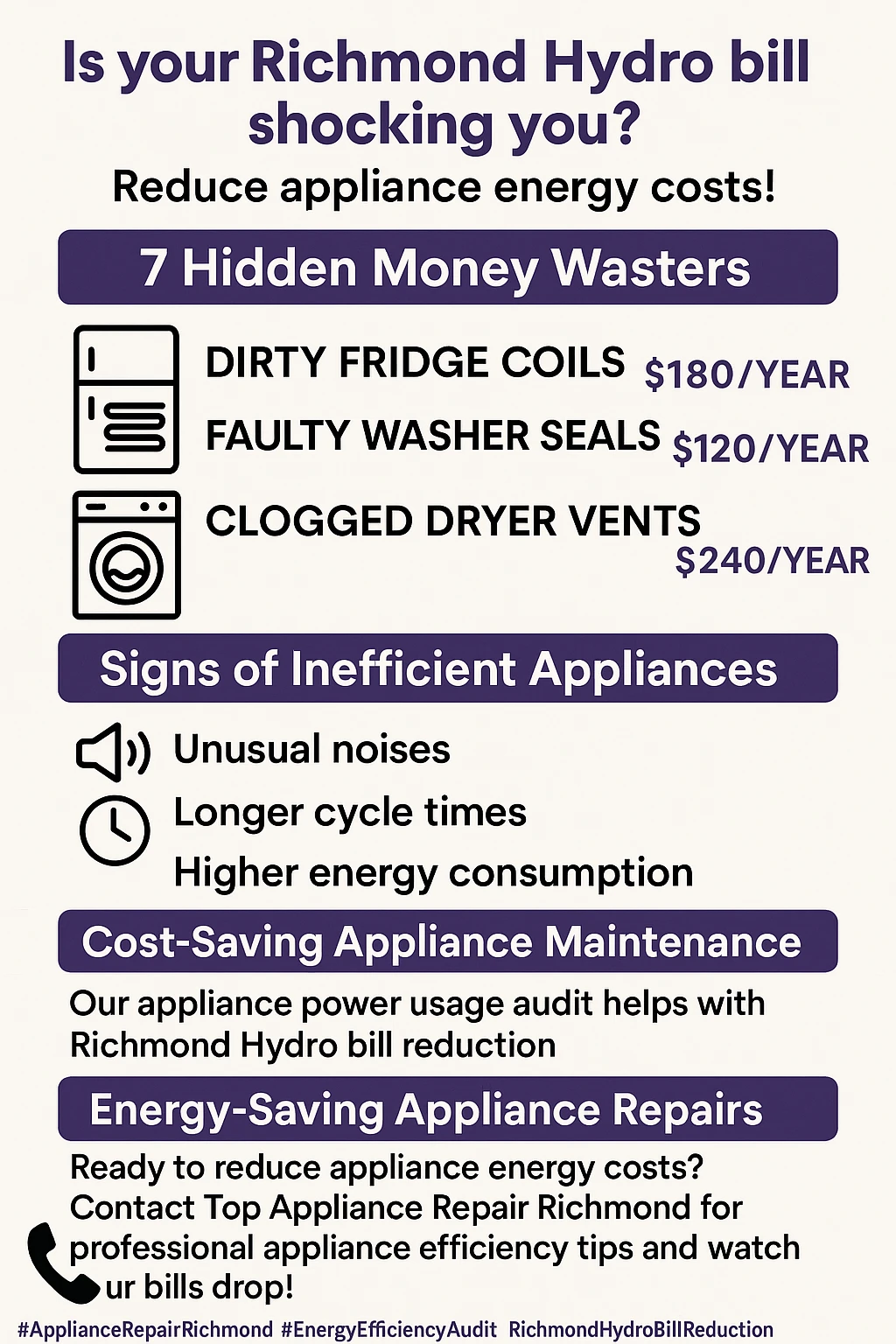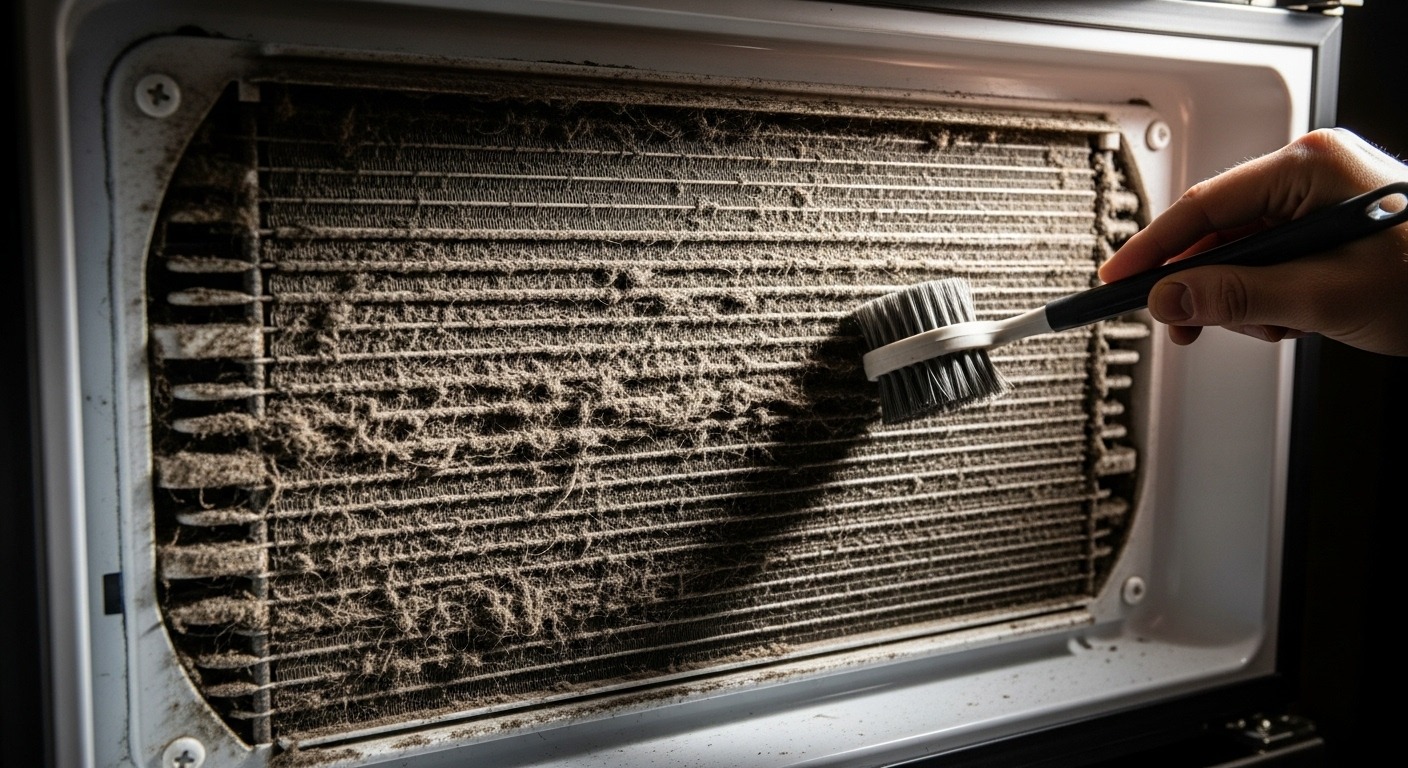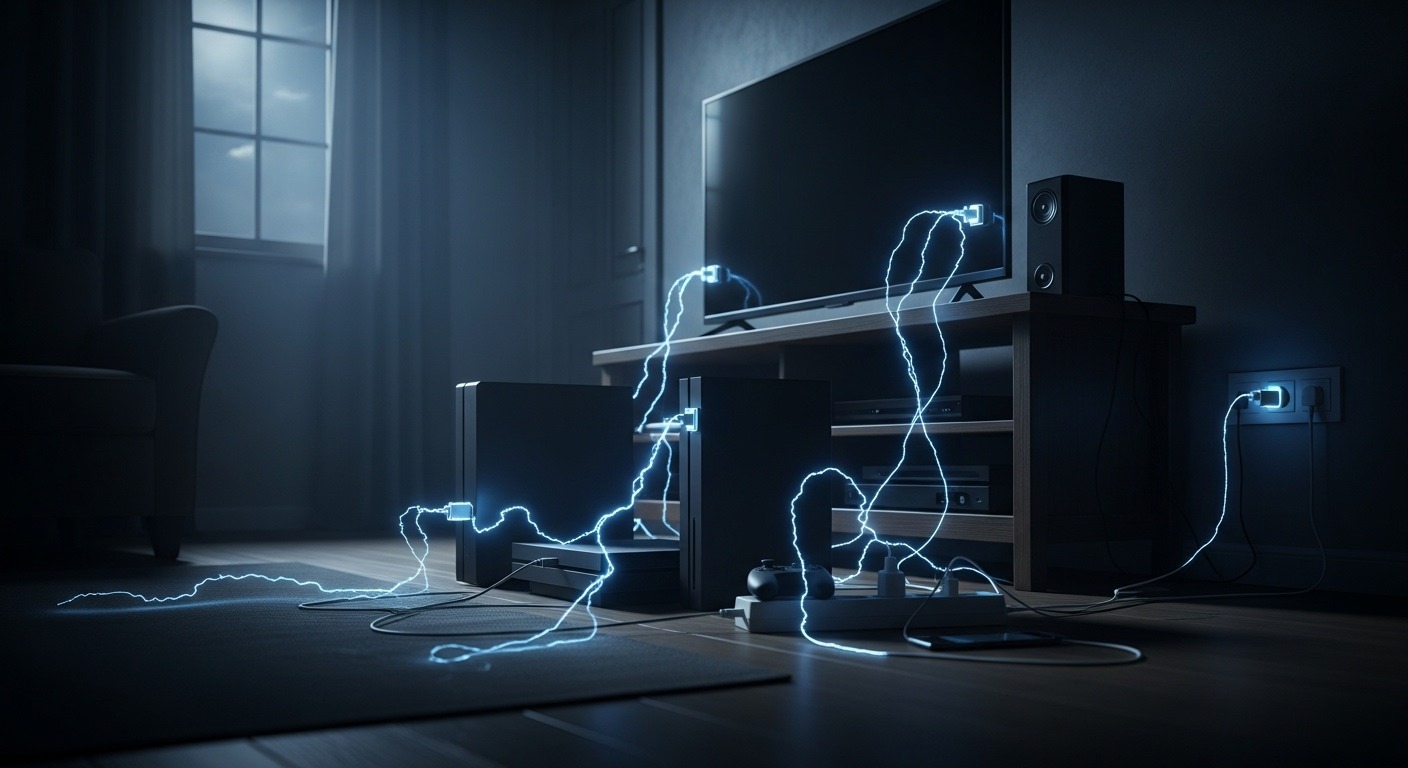Richmond Appliance Energy Efficiency Audit: 7 Hidden Ways Your Appliances Are Wasting Money (And How Much Each Fix Actually Saves)
Tired of watching your Richmond energy bills climb higher every month while your appliances secretly drain your wallet? You’re not alone – the average American household spends over $1,700 annually on electricity, with Richmond residents facing an additional $11.25 monthly increase starting July 2025, making energy efficiency more crucial than ever.
Picture this: you’re diligently turning off lights, adjusting your thermostat, and trying every energy-saving trick in the book, yet your electric bill keeps creeping up. What if I told you that your appliances are playing a sneaky game of hide-and-seek with your hard-earned cash? They’re silently wasting energy in ways you’d never suspect – from phantom power draws that cost up to $100 yearly to clogged dryer vents burning through an extra $300 annually.
As someone who’s helped countless Richmond homeowners slash their energy bills, I’ve discovered that most families are unknowingly throwing away $900 to $1,400 every year through seven specific appliance efficiency killers. The good news? These hidden money drains are surprisingly easy to fix once you know what to look for. Ready to become an energy-saving detective in your own home?
From dirty refrigerator coils that can increase your cooling costs by 20% to outdated appliances that guzzle electricity like a vintage gas-guzzler, we’ll uncover exactly where your money is disappearing and show you how to stop the bleeding. Each fix comes with real savings calculations, so you’ll know precisely how much you can expect to save – and most solutions pay for themselves within months, not years.
Key Outtakes:
- Phantom power from plugged-in appliances costs Richmond households up to $100 annually, accounting for 5-10% of residential electricity consumption
- Dirty refrigerator coils and damaged door seals can increase energy consumption by 15-20%, adding $30-60 to annual energy bills
- Clogged dryer vents increase energy usage by 25-35% per load, wasting $180-300 in annual energy costs
- An appliance energy efficiency audit can identify fixes that collectively save Richmond homeowners $465+ per year
- Regular appliance maintenance reduces energy consumption by 10-15% while extending appliance lifespan by several years

Understanding Your Richmond Appliance Energy Footprint
Let’s start with the cold, hard facts about energy consumption in Richmond homes. The average monthly electric bill hit $144 in 2024, translating to over $1,700 annually – and that’s before the Richmond DPU rate increases that will add approximately $11.25 more per month starting July 2025. With heating and cooling making up 51% of energy costs in the average American household, your appliances are working overtime and costing you more than you realize.

Here’s where it gets interesting: while everyone obsesses over their HVAC system (rightfully so), the real energy vampires are often hiding in plain sight. According to the U.S. Energy Information Administration, the home appliances that use the most energy are space heaters and AC units, water heaters, refrigerators, cooking appliances, and clothes dryers. But here’s the kicker – it’s not just about which appliances use the most energy; it’s about how efficiently they’re running.
Your refrigerator alone consumes 4% of your total home energy, while clothes dryers account for 3.2%. That might not sound like much, but when you’re dealing with the national average electricity consumption of about 1,000 kWh per month, these percentages add up fast. The problem isn’t necessarily the appliances themselves – it’s the hidden inefficiencies that turn your energy-saving efforts into expensive failures.
Want to get serious about tracking your energy consumption? Here’s the formula that’ll change your relationship with electricity: (Wattage × Hours Used Per Day) ÷ 1000 = Daily Kilowatt-hour (kWh) consumption. Multiply that by your utility rate, and you’ll see exactly what each appliance is costing you. Most Richmond homeowners are shocked when they discover their “efficient” appliances are actually energy hogs due to poor maintenance and hidden issues.
The reality check gets even more sobering when you consider that many Richmond homes are harboring appliances over 10 years old. These aging workhorses might seem fine on the surface, but they’re quietly burning through energy like there’s no tomorrow. The good news? Once you identify these seven hidden wastes, you can start reclaiming hundreds of dollars annually – money that’s been slipping through the cracks without you even noticing.
The 7 Hidden Ways Your Appliances Are Wasting Money
Now we’re diving into the meat and potatoes of appliance energy waste – the sneaky culprits that are silently inflating your Richmond energy bills. These seven hidden money drains are so common that I’d bet my favorite energy monitor that your home has at least three of them right now. The silver lining? Each one has a specific fix with measurable savings, and most can be tackled in a single weekend.
Think of your home as an energy ecosystem where every appliance plays a role. When one component starts wasting energy, it creates a ripple effect that impacts your entire electrical system. The phantom power draw from your entertainment center influences how hard your cooling system works; dirty refrigerator coils affect your kitchen’s ambient temperature; clogged dryer vents add humidity that makes your AC work overtime.
What makes these energy wastes particularly insidious is their invisible nature. Unlike a broken appliance that stops working entirely, these issues fly under the radar while steadily draining your wallet. You might notice your energy bill creeping up, but without a systematic audit, you’ll never connect the dots between that slightly warm refrigerator exterior and the extra $50 you’re spending monthly on electricity.
Hidden Waste #1: Dirty Refrigerator Coils (Annual Savings: $50-150)
Your refrigerator’s condenser coils are like the lungs of the appliance – when they’re clogged with dust, pet hair, and kitchen grime, your fridge has to work exponentially harder to maintain proper temperatures. For efficient operation, you should vacuum out the refrigerator and freezer coils at least once a year, yet most Richmond homeowners have never even seen their coils, let alone cleaned them.
Here’s what happens when you neglect this simple maintenance task: those dirty coils can’t release heat efficiently, forcing the compressor to run longer and work harder.  The result is a cascade of energy waste that shows up as higher electricity bills and shorter appliance lifespan. Studies show that this neglect can increase your refrigerator’s energy consumption by 15-20%, which translates to an extra $30-60 annually for the average Richmond household.
The result is a cascade of energy waste that shows up as higher electricity bills and shorter appliance lifespan. Studies show that this neglect can increase your refrigerator’s energy consumption by 15-20%, which translates to an extra $30-60 annually for the average Richmond household.
The coils are typically located behind the vent cover on the front of the unit or in the back of the refrigerator. Cleaning them is surprisingly straightforward – unplug the unit, remove the protective grille, and use a vacuum with a brush attachment or a coil cleaning brush to remove accumulated debris. The entire process takes about 20 minutes and can prevent hundreds of dollars in premature repairs.
But here’s the deeper issue: old refrigerators (10+ years) can cost more than $200 in added energy costs annually compared to newer models. When you combine dirty coils with an aging appliance, you’re looking at a perfect storm of energy waste. ENERGY STAR certified refrigerators cost about $50 a year to run on average, while a neglected older model might cost $250 or more.
The maintenance schedule is simple but critical: clean your fridge coils at least once a year, or twice yearly if you have pets. Mark it on your calendar, set a phone reminder, or tie it to seasonal activities like changing your HVAC filters. This 20-minute task can add years to your refrigerator’s life while keeping your energy bills in check. Think of it as preventive medicine for your appliances – a small investment in time that pays dividends for years to come.
Hidden Waste #2: Phantom Power Draw (Annual Savings: $75-100)
Welcome to the invisible energy thief that’s robbing Richmond homeowners blind while they sleep.  The Department of Energy estimates that standby power
The Department of Energy estimates that standby power
